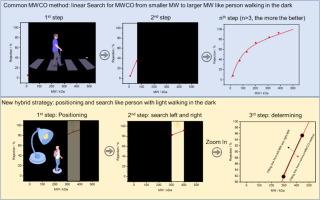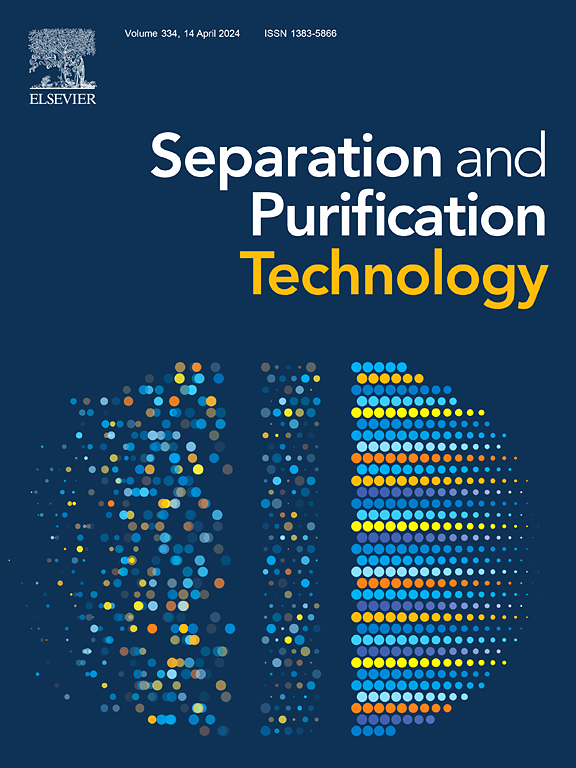Estimating molecular weight cut off of porous membranes via “Positioning-Searching-Determining” triple-step method
IF 8.1
1区 工程技术
Q1 ENGINEERING, CHEMICAL
引用次数: 0
Abstract
Although the molecular weight cut-off (MWCO) method is commonly used to assess the pore size of porous membranes, it requires a large quantity of standard substances. As such, a hybrid approach characterized by a “Positioning-Searching-Determining” three-step method was proposed to acquire a precise MWCO value for porous membranes more efficiently and cost-effectively. Firstly, the ratio of the convective flow permeability coefficient (Ld) to pure water permeability (A) was introduced to evaluate the surface defect of porous membranes. The mathematical modeling process depicting the approximate correlation among Ld/A, solute rejection (Rt), and MWCO showed that LnRt could be expressed by Ld/A, and Rt could also be expressed by lnMWCO in the form of polynomial functions. Subsequently, by measuring the values of Ld/A, Rt, and MWCO for commercial ultrafiltration (CUF) membranes with different pore sizes, the governing equations along with the corresponding fitting parameters were obtained. Then, the obtained governing equations were used to assess the MWCO of homemade porous composite membranes (PCMs). Comparative analysis revealed that the currently established mathematical equations among Rt, Ld/A, and MWCO caused a more significant divergence between the predicted and measured values for PCMs when Ld/A or Rt was outside the range of the selected CUF membranes, indicating that simply using the governing equations was more likely to provide not an exact but an approximate MWCO value. In view of this situation, the “Positioning-Searching-Determining” hybrid strategy was constructed by using the approximate equations to obtain the approximate MWCO value and then obtaining the precise MWCO value through solute rejection experiments for the selected two standard substances. Experimental results showed that utilization of the hybrid stratagem to acquire MWCO could constrict the error ambit to a narrower range (−5% to +14 %) and minimize the quantum of chemical reagents. Therefore, the proffered hybrid modus operandi coalesces the excellences of the sheer predictive mode and the sheer measurement mode, thereby enhancing the dependability and reducing the measurement outlay. Moreover, the proposed novel hybrid tactic has the ability to transmute the MWCO determining tactic from blind and simplistic seeking to sagacious positioning and purposeful seeking.

求助全文
约1分钟内获得全文
求助全文
来源期刊

Separation and Purification Technology
工程技术-工程:化工
CiteScore
14.00
自引率
12.80%
发文量
2347
审稿时长
43 days
期刊介绍:
Separation and Purification Technology is a premier journal committed to sharing innovative methods for separation and purification in chemical and environmental engineering, encompassing both homogeneous solutions and heterogeneous mixtures. Our scope includes the separation and/or purification of liquids, vapors, and gases, as well as carbon capture and separation techniques. However, it's important to note that methods solely intended for analytical purposes are not within the scope of the journal. Additionally, disciplines such as soil science, polymer science, and metallurgy fall outside the purview of Separation and Purification Technology. Join us in advancing the field of separation and purification methods for sustainable solutions in chemical and environmental engineering.
 求助内容:
求助内容: 应助结果提醒方式:
应助结果提醒方式:


